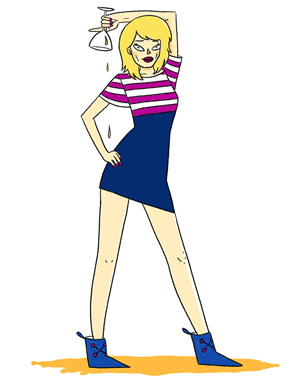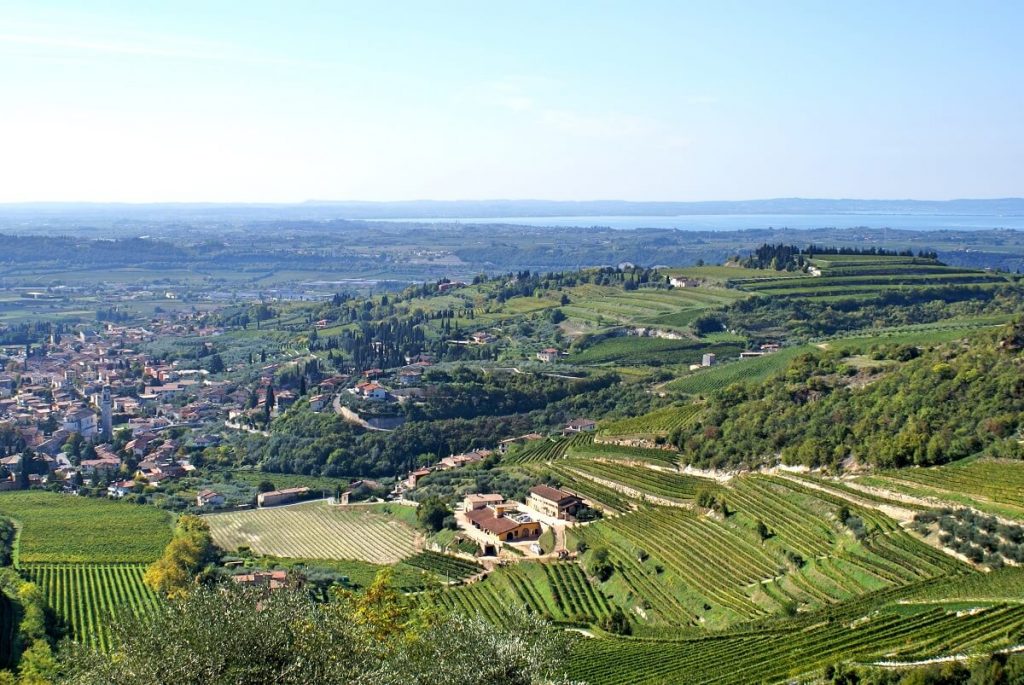
As the adage goes, you can wait an age for one bus and two turn up together. So it was with Amarone tastings in December. No doubt timed for the festive season. Having taken a short journey with Famiglia Storche, the English Nose hopped on the second bus which promised a tasting to ‘discover the elegance of Amarone della Valpolicella and its unique Appassimento method.’
I noted a few things from this tasting. Firstly in Valpolicella they don’t really speak about terroir, only in the broadest sweep – yes the temperature ranges from an average of 26.1 degrees nearest Lake Garda influenced by the cool air flow from Adige valley… to a slightly warmer average of 28.9 degrees on the Eastern side of the region, which snuggles against Soave and lies about 100 km from Venice. Slope and aspect together with soil composition and depth are secondary to the winemaking technique. This makes sense. The nuances of terroir are naturally going to disappear as the grape is dried.
Terroir should be more apparent in Valpolicella DOC wine, fermented using fresh grapes. Often however this simple, light-bodied red wine style is not one in which you’d be searching for it… but there is the potential for higher quality terroir wine, but I digress as this is about Amarone.
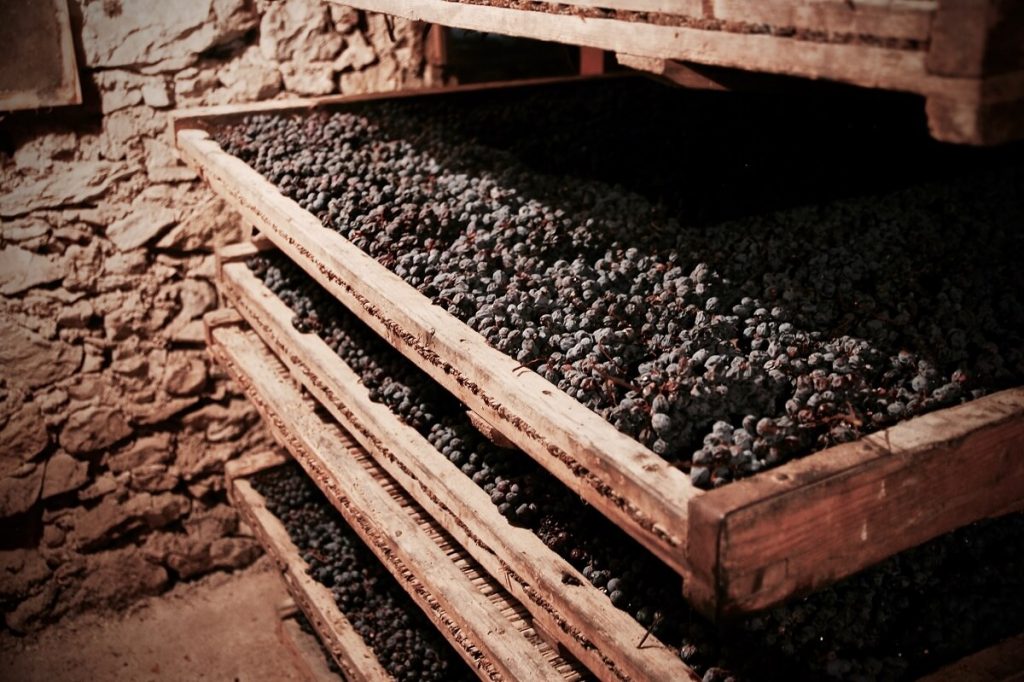
There are eleven (well 13) valleys running down from the mountains and the best vineyards are found between 120 to 600m. Predictably the valley floor is less good. It is over on the west near to Lake Garda where you’ll find the Classico zone. Italy’s largest expanse of water has the moderating effect on the climate here as you might expect. Valpolicella “Classico” is arguably the best region, (classico refers to the oldest zone, the historical heart of an Italian wine producing region with a protected origin) but this is successfully disputed by the excellent quality of some wine from other areas. Dal Forno for example has done much to raise the profile of Illasi.
Something not in dispute is the influence of wind. The breezy climate makes drying the grapes possible. Back in the mists of time, (the Romans made wine here) drying probably came about because these cooler northern parts simply didn’t seem to produce grapes with sufficient stuffing – however shrivelling the fruit concentrates everything – sugar, tannins and tartaric acidity.

Corvina is the undisputed king of grapes in Valpolicella, possibly because it is the variety which lends itself most happily to drying,. The bunches are loose and open. It’s mandatory to use Corvina – from 45-95%. It has a backing group as it is not permitted as a single varietal under DOC and DOCG regulations. (Those who want to make it as such use the IGP).
The bevy of backing grapes include Corvinone – no relative of the former variety. The blend has to include 45-95% of Corvina or Corvinone or a blend of both. Some use this larger berried variety other don’t, but it’s mandatory to include Rondinella from 5-30%. Rondinella is related to Corivna.
And then there is Molinara, some use a soupçon, but seemingly it’s on the decline. Molinara is derived from the Veronese word for miller, translating as flour mill which refers to the downy coating on the skin. The skin delivers very little in the way of anthocyanin – part of the polyphenolic group which give colour. It’s diminishing popularity may be the diluting effect on the colour of the blend. However it does bring good acidity and spice to the party and many include it for old times sake – as a component of the traditional blend.
Meanwhile small berried, rather tannic Oceleta is enjoying a bit of a resurgence, albeit in small quantities. All the wine we tried seemed to have a different blend and the rules allow 15% of other local varieties from the Veneto and 10% of other Italian varieties and even a little Cab Sav, Cab Franc and Merlot, although in reality these represent only about 3%.
In addition to the wine itself (and yes we will get to some tastings notes) what gets the Nose’s nose twitching is a traditional region in a state of change. The tradition is deep rooted – wine has been produced with the local varieties using the appassimento method since at least C6th, but today’s producers are pushing the boundaries of interpretation.
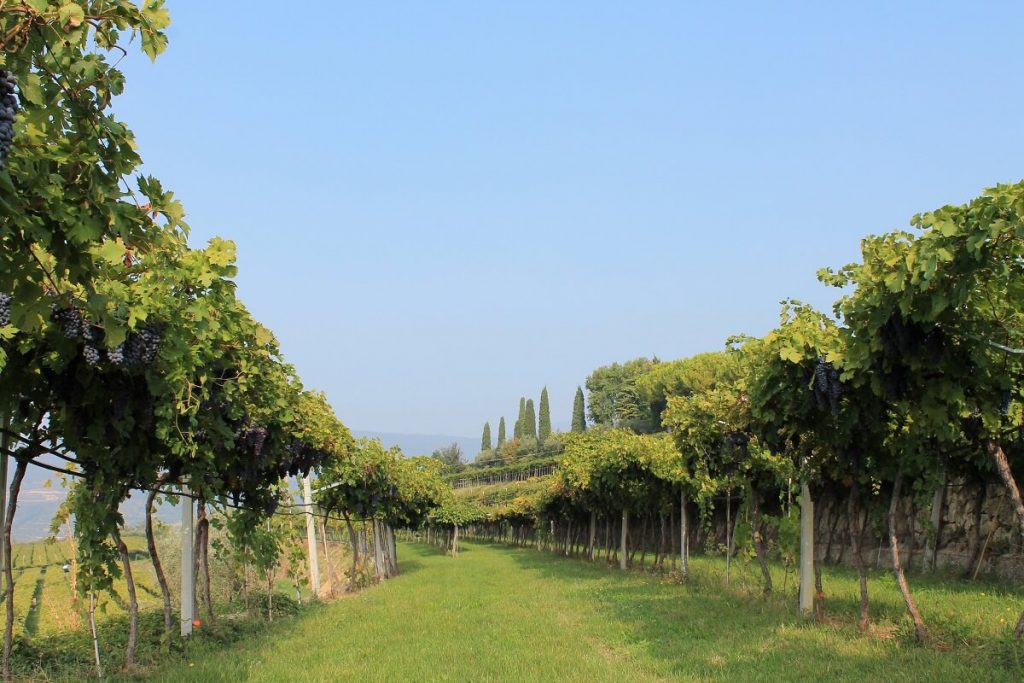
It’s a region with a very strong identity, finding a host of different expressions. This makes it alive, captivating and exciting.
In the vineyard, I’ve already mentioned that innovative producers are finding pockets of land in the folds of the hills where it is possible to make excellent wine to compete with the classico zone. The traditional pergola Veronese trellising system is being challenged by guyot. While this was introduced a while back (some 100-150 years), today opinions seem divided. It’s cheaper to manage as most of the work can be mechanised, but the bunches can be over exposed to sunburn, something to be considered with the heatwaves of climate change.
Then there is botrytis, which is not considered to be traditional. The de-hydration technique is after all appassimento and in tact grapes with perfect skins are integral, but some argue that botrytis can contribute another dimension. It’s a risky strategy though.. botrytis can quickly turn to grey mould in the humid conditions of a fruttaio.
And in the winery – well of course we have the ‘new’ ripasso style, which was ratified with its own DOC in 2010.
I seems I am not alone in finding the ripasso style engaging. It’s been an unexpected success for the region and sales have eclipsed those of Amarone which accounts for about 25%. Recioto is minuscule – just 0.5%. There are now copy cat ripassos – Puglia is having a go and capturing the slice of the market with a cheaper version.
Just to recap on the process – the bottom 10-15% of the tank of Amarone or Recioto is kept and a Valpolicella is added or re-passed over this juicy debris, which may restart a fermentation, depending on the sugar levels in the skins. It stays here for a minimum of 3 days, but up to 2 to 3 weeks, being careful with the extraction, for the tannins taken from the wet marc could be quite aggressive..
But (as a winemaker) it does beg the question – are these Amarone missing something by not being pressed? After all it’s just the free-run juice which is taken. I can see that it’s really useful technique to beef up the Valpolicella, but not at the expense of the quality of Amarone. However the answer may in the level of extraction during fermentation of Amarone – a number of things make this quite extractive: length 30-40 days which is a goodly time; high levels of alcohol (a solvent and hence extractive) and technique – one of the wines we tried, which had pretty punchy tannins, had three punch downs a day. Now that’s generous.
The ‘Nose’ would like to delve deeper.. but I will have to wait for the third bus…
And then there is wood. Many still use the traditional large Slavonian oak botti, although few use the cherry and chestnut wood of yesteryear. Many have moved, all or in part, to french oak barriques. Smaller oak will of course promote more rapid maturation, while the larger the volume and older the oak the more slowly it progresses… the law stipulates two years maturation for Amarone DOCG and four years for Amarone Reserva but in the traditional botti – large casks – it might be left longer. In the tasting we were shown a variety of styles.
A traditional approach to the winemaking and ageing, can produce something quite robust and rustic but also something complex and refined. The last wine in the tasting from Bertani is an example of the latter. Keep in mind that even an accessible style of Amarone will be better if you wait. Take a good, ripe vintage, such as 2015, you can afford to wait at least 8-10 years before starting to drink them (from 2023/5) and they will continue to evolve for many years after. I have given the earlier date from which you might want to drink these wines. I would not necessarily keep the leaner 2014 vintage. The 2012 is beginning to become interesting, but would benefit from a little longer, while the 2011 is coming into its own.
This tasting showed a range of styles from the more traditional to the super modern. There is something for everyone, so jump aboard.
(All photographs from the Consorzio Valpolicella)
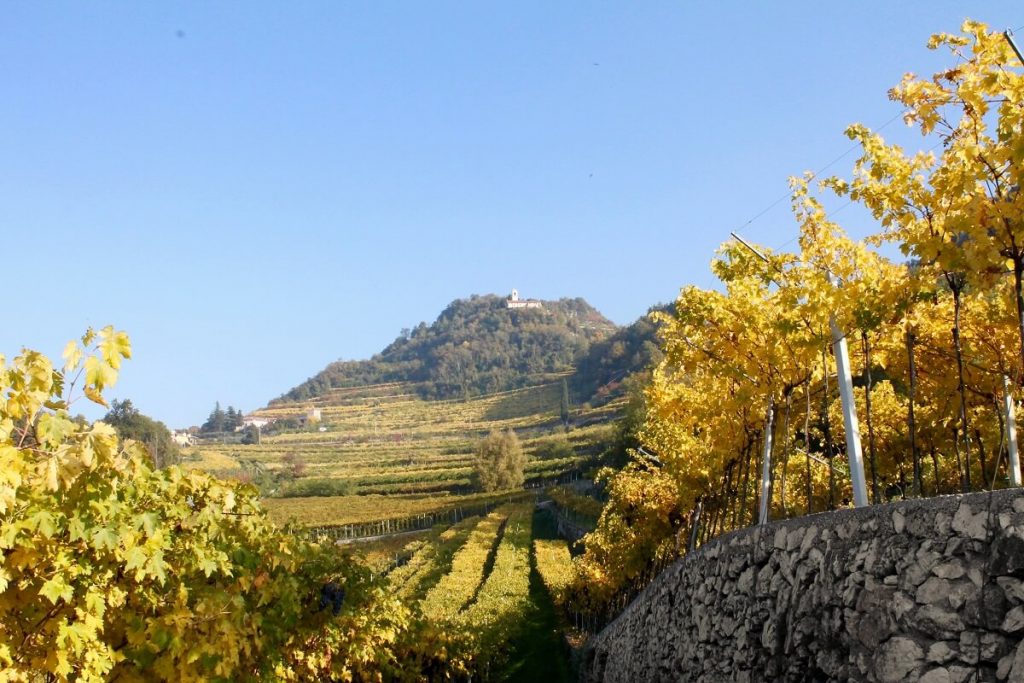
San Rustico, Amarone della Valpolicella DOCG Classico 2015
Ripe, smooth and generous, but not overly rich. Just nicely balanced. I like the bitter cherry bite on the finish. It’s inviting and accessible. More modern style. Plenty of ageing capacity. It’s still very much in the fruit stage. 17.85 From 2021/22
Fumanelli, Amarone della Valpolicella DOCG Classico 2015
Rich aroma with dark forest fruits and a touch of leather. Showing some aromatic development. A sturdy, dense Amarone with quite a robust tannic structure. This is aged in tonneau (large barrels) for 30 months and is a powerful more traditional style. 17.75 From 2022
Costa Arénte, Amarone della Valpolicella DOCG 2015
This has liquorish, tarry smoky characters. Firmly tannic and plenty of acidity. It’s punchy. This wine had 3 pigeage a day, so is quite extractive and will need time. 17.5 From 2023
Roccolo Grassi Amarone della Valpolicella DOCG 2015
This is a very modern style with new oak apparent on the nose and palate. It’s aged for 24 months in 50% new barriques. There is marked ‘sweetness’ not just from the residual sugar, but a sense of sweetness from the alcohol and a richness of texture from the glycerol. It has 17% alcohol. Deep dark chocolatey flavours and chunky smooth tannin with some interesting spicy notes.. dried coriander. It’s an overt, powerful and modern style and needs time to settle. Built for the future. 18 From 2025
Ilatium Morini Amarone della Valpolicella DOCG 2014 “Campo Leon”
200m above sea level. includes 10% Croatina. 7 brothers and cousins make this wine. It’s quite a new, 2004 was the first vintage. The fruit was sold to the co-op before this. Inspired by the wines of Romano Dal Forno. (Although you would not guess this from the 2014 – having tasted their 2016 now, it is much more apparent in that vintage). They use 228-500l barrels and some are American which is unusual.
Herbal aromas and flavours. Quite leafy on the palate and fresh. The tannins are svelte. It’s a lighter vintage, but very nicely done. You do not have to wait, I would start drinking this now.. 16.5
Cantine Giacomo Montresor, Amarone della Valpolicella DOCG 2013 ‘Capitel della Crosara”
This is showing some evolution and has a savoury, nicely bitter character. Forest floor, mossy and stable notes. It’s ‘lighter’ with modest intensity in the mid palate. You could drink this quite happily now as it shows some complexity of age, but without the intensity to develop much further. 16.5
Cristiana Bettili Wines , Amarone della Valpolicella DOCG 2012
This lady winemaker works organically and her wines have four years ageing. There was quite a lot of VA and it was very herbaceous. I am not sure this was the best bottle. I would like to give it the benefit of doubt. I would need to try her wine again.
Sartori di Verona Amarone della Valpolicella DOCG classico 2012 ‘Corte Brà’
Includes 15% Rondinella and 5% Osceleta. Richly intense and luscious. Very good density. I love the quite dusty, burly tannins. There is quite a lot of glycerol. Sweet, long finish. Not too modern. It’s accessible. Very sound. You could drink now, but plenty of ageing potential and I would wait. 17.75.
*Azienda Agricola Trabucchi, Amarone della Valpolicella DOCG 2011
Around 200m above sea level and from Illasi area most famous for Dal Forno. 36 months in new French oak. Coffee and dark chocolate with a hint of caramel. It is smooth, rounded and succulent. Lovely texture..velvety on the finish. Bitter notes too – good balance for the effect is bitter sweet. The is a touch of VA, but in an appetising way. A complex layered wine. It’s at the beginning of it ‘interesting’ drinking window. It’s showing the complexity of age. 18.25
*Zanoni Pietro Amarone della Valpolicella DOCG 2011
This is a field blend which includes Osceleta. It feels more modern upfront, but this fades as the palate develops…it is intense, quite tart with some spicy aromatics, touch of oregano. The tannins are smooth. I like the energy and sapidity at the end. You could drink this now or age it further. 18.25
*Le Guaite de Noemi, Amarone della Valpolicella DOCG 2010
Cold pre-ferment maceration and fermented using cultured yeast. Aged in new barriques. this is a high location 450-500m above sea level. Limestone and volcanic soils.
This is both rich and fresh. It’s a modern style with quite a lot of oak. Maybe it is the high location, but it has quite a herbal, flavour profile. The tannins are smooth. An elegant, high toned and energetic wine. (I have since tasted more wines from this producer and I am increasingly impressed). 17.75-18
*Bertani, Amarone della Valpolicella DOCG Classico 2009
Old school winery with a great reputation. Traditional winemaking. 120 days drying – so well above the statutory. It has 6 to 7 years ageing in old Slavonian oak. Complex bouquet of leather, toast. It’s slightly oxidative in an appealing way. A layered, very aromatic palate with tabasco and slightly earthy. There is an edge of austerity. Fine texture and long finish. among my favourite of the tasting, but 2009 is also a great vintage. 18.5. Drinking now, but plenty of ageing potential.

